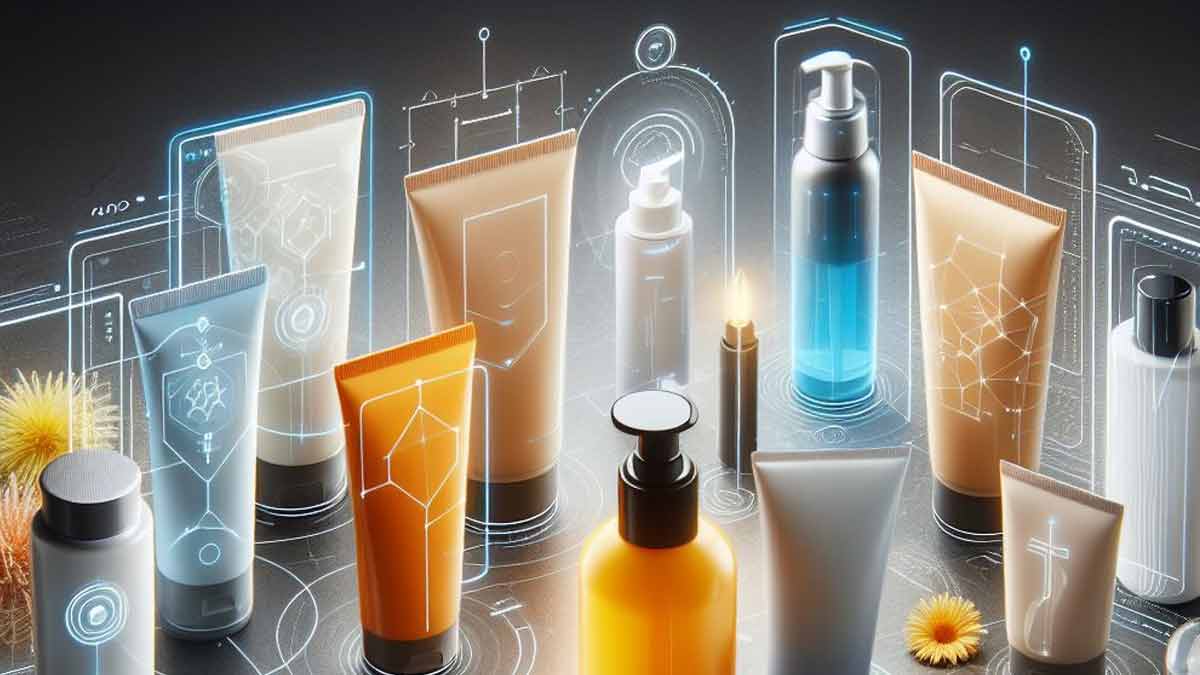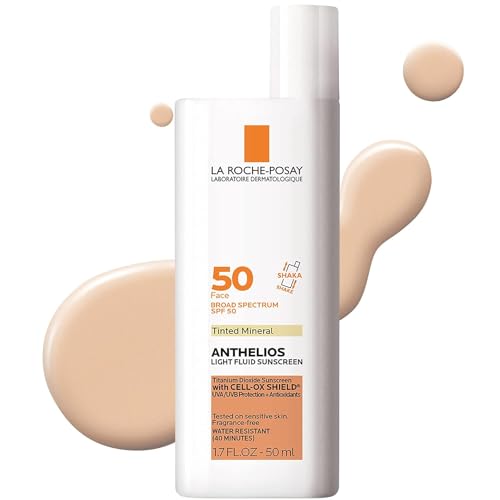We’re witnessing a remarkable shift in the world of sunscreens, with innovation at the forefront of skin protection. The days of greasy, pore-clogging formulas are dwindling as new sunscreen ingredients make a splash, offering formidable defense against the sun’s wrath. It’s not just about UV rays anymore; the latest buzz is around shielding skin from high-energy visible (HEV) light, which can be just as sneaky and damaging.
Manufacturers are listening to consumers’ cries for more inclusive, blendable options that cater to a variety of skin tones without leaving that dreaded white cast. Plus, we’re busting myths left and right, like the one about sunscreen blocking all Vitamin D – spoiler alert: it doesn’t. So, what’s in this next-gen arsenal of sun protection that’s turning heads and upping the ante for a day in the sun?
More from Glowing Gorgeous: Find out here the Best Silicone-Free Moisturizers And Why Do You Care
Glowing First Glimpse
- New sunscreen ingredients focus on broader protection, including against HEV light, and are becoming more consumer-friendly.
- The safety and effectiveness of ingredients like titanium dioxide and bemotrizinol remain very important.
- Global regulations impact the availability of innovative sunscreen ingredients. Will U.S. catch up to the EU?
Breaking Down Sunscreen Innovations
It’s been a slow crawl with sunscreen development, largely because new sunscreen ingredients have had a tough time getting the nod from the FDA. But don’t think for a second that means there’s been a standstill. Recent times have seen a surge in sunscreen ingenuity, particularly against the nemesis of high-energy visible (HEV) light. We’re talking about iron oxides and certain powerhouse antioxidants that are stepping into the ring to offer our skin some much-needed backup.
Now, when it comes to slathering on the protection, we’ve got more options than a diner menu. A slew of new formats like powders, gels, and setting mists are hitting the shelves. Why stick to the old lotion when you can dust, spritz, and gel up? And let’s not overlook the realm of fashion merging with function – sun-protective clothing that won’t make you look like you’re dressed for a safari. It’s the perfect combo of chic and shield.
FDA’s Stance on New Ingredients
The FDA has been quite the gatekeeper when it comes to sunscreen active ingredients, and it’s been ages since they’ve given the green light to a new one. The last time that happened, cell phones were the size of bricks. However, let’s clear things up a bit: while the agency hasn’t approved new active ingredients, they haven’t been totally asleep at the wheel. There’s been movement in the extra goodies added to sunscreens, aiming to bolster our defense against the sun’s relentless rays.
The Rise of Mineral Formulations
Mineral sunscreens are stepping up their game. Gone are the days of the chalky, ghostly residue—today’s mineral formulations are lighter, more blendable, and honestly, they play nice with all skin tones. We’re seeing an impressive range of shades that cater to a diverse clientele, which means everyone can step out into the sun without looking like they’ve had a close encounter with a flour bag.
The Myth of Vitamin D and Sunscreen
Let’s cut through the noise: sunscreen is not the villain in your body’s Vitamin D story. The whispers that sunblock totally blocks Vitamin D absorption are just that—whispers, not facts. In truth, you can wear sunscreen and still soak up enough sunshine to keep your Vitamin D levels hearty. And hey, for those who are concerned, there’s a growing popularity in supplement pills designed to support sun protection from the inside out. But remember, they complement sunscreen; they don’t replace it.
The Safety and Effectiveness of New Ingredients
When we’re talking about slathering our skin with sunscreen, we want the good stuff, not something that’s gonna do more harm than good. So, let’s get into the nitty-gritty of titanium dioxide’s safety. This mineral sunscreen ingredient is like a bouncer, blocking UV rays from crashing the party at your skin’s expense. But is it safe? I can tell you that titanium dioxide sits tight on the skin, providing a physical barrier without soaking into your body, which makes it a smart pick for folks with sensitive skin. And let’s not forget bemotrizinol, a lesser-known but highly effective UV filter that’s rocking the sunscreen world with its broad-spectrum defense.
The effectiveness of these ingredients? It’s like comparing a waterproof jacket to an umbrella – both keep you dry, but one’s a bit more thorough. Titanium dioxide and its friend zinc oxide, cover the UVB and UVA spectrum, keeping your skin under wraps from sunburn and damage that can lead to skin cancer. European sunscreens, they’ve got a leg up with ingredients like bemotrizinol, and they often come with a higher sun protection factor. Meanwhile, the FDA-approved options in the U.S. are still playing catch up, but they’re getting there.
Bemotrizinol
Now, let’s talk bemotrizinol – it’s not just a fancy word. This new sunscreen active ingredient is a chemical filter that pulls its weight by absorbing both UVB and UVA rays. It’s a heavy-hitter in the UV protection game and has a reputation for being less irritating to the skin. Plus, it’s photostable, meaning it doesn’t break down in the sun like some other chemical sunscreen ingredients.
When it comes to bemotrizinol-containing sunscreen brands, they’re more common across the pond, but you can still find them if you look hard enough. It is generally marketed as Parsol Shield, Tinosorb S, and Escalol S.
Brands like Ultrasun Face Fluid Brightening, Anti-Ageing & Anti-Pollution SPF 50+ are worth a gander. They’re not only packed with bemotrizinol but also nestle in other goodies like antioxidants.
More from Glowing Gorgeous: Find out here Hyram’s Recommended Face Sunscreens For The Summer
Ultrasun’s formula doesn’t just protect; it pampers your skin, fighting off the environmental villains while keeping your complexion in check. The high SPF and anti-aging components make it a solid ally in your daily battle against the sun’s relentless rays.
FDA’s GRASE List and What It Means
So let’s chat about the FDA’s GRASE list. This is the government’s version of a VIP list, where only the safest and most effective sunscreen ingredients get the nod. When something’s tagged as GRASE, it means it’s passed the test for being kind to your skin and getting the job done. It’s like a stamp of approval for sunscreens, and for you, it’s a shortcut to finding products that you can trust not to turn you into a science experiment.
Looking up “fda grase sunscreen” is a bit like reading the nutritional info on your breakfast cereal – it gives you the intel you need to make a better choice for your skin. This list keeps you in the loop about what’s safe to slather on, so you can spend less time worrying about harmful ingredients and more time enjoying the sunshine – responsibly, of course.
The Global Perspective on Sunscreen Ingredients
Let’s take a stroll around the world’s approach to sunscreen ingredients, shall we? You might notice that while strolling through the aisles of a European pharmacy, the shelves are stocked with sunscreen products boasting ingredients you won’t typically find in the U.S. This is because the U.S. Food and Drug Administration (FDA) has a much tighter rein on sunscreen regulations compared to their European counterparts. The European market, for instance, has access to a variety of ultraviolet filters that have been developed more recently and are designed to offer superior sun protection.
But things might be shifting stateside. You see, there’s a growing push to get the FDA to loosen up a bit and allow new sunscreen filters to penetrate the market. This isn’t just about having more options; it’s about providing superior protection against skin cancer and paving the way for innovation in sunscreen formulations. The implications? We could be getting sunscreens that do a better job at shielding our skin without the ghostly white cast or irritation that some current mineral sunscreens can cause.
The disparity largely lies in the approval process. In the U.S., sunscreen ingredients are regulated as over-the-counter drugs, which means they need to go through a rigorous approval process before they can be used. In contrast, the European Union classifies sunscreens as cosmetics, making the approval process for new ingredients quicker and, some might argue, more responsive to scientific advancements.
Now, let’s talk about the new sunscreen ingredient on the block: Mexoryl SX. This chemical filter offers exceptional protection against UVA rays—the ones that sneak deep into your skin and cause long-term damage. While it’s been embraced with open arms in Europe and Canada, the U.S. has been more hesitant. However, there’s hope on the horizon. The Sunscreen Innovation Act, passed a few years back, aimed to speed up the FDA’s evaluation of new sunscreen active ingredients, and Mexoryl SX is one of those standing in line, waiting for its chance to shine stateside.
The bottom line is that the U.S. could learn a thing or two from our international friends when it comes to sunscreen regulations. By adopting a more flexible approach, we’re looking at a future where we can not only improve our skin protection game but also decrease the risk of skin cancer with cutting-edge sunscreen technology.
Consumer-Friendly Formulations
In the world of sun defense, I’ve seen a shift that’s as refreshing as a cold beer on a scorching beach day. Sunscreens are getting a makeover, becoming lighter, easier to apply, and blending seamlessly into the skin without leaving that ghostly white residue we all dread. This evolution of mineral sunscreens, notably those with zinc oxide and titanium dioxide, is a major win for anyone who’s ever felt like they were applying a layer of paint to their face. The new formulations are smooth, practically invisible, and don’t mess with your natural complexion.
Moreover, the inclusivity game in the sunscreen market is stronger than ever. With a wider range of shades available, people from all walks of life can now find a sunscreen product that doesn’t make them look ashy or mismatched. It’s about time, considering that sun protection is a universal need. Brands like Black Girl Sunscreen and CoTZ have stepped up, offering options that blend beautifully on diverse skin tones, ensuring nobody’s left out of the sun safety club.
And let’s talk about the innovative formats hitting the shelves—sunscreen isn’t just a cream you slather on anymore. We’ve got sunscreen mists that refresh like a sea breeze, sticks that glide on like lip balm, and even powdered forms that top up your protection like a touch-up of your favorite matte finish. For folks always on the move, these options are as convenient as it gets. They cater to our busy lifestyles, making it dead easy to reapply, even when you’re out conquering the world or just running errands.
But there’s a hitch. All these fantastic products won’t do squat if people aren’t using them correctly. Misinformation and myths about sunscreen are as stubborn as a bad hangover. It’s critical that we continue to educate consumers on proper sunscreen use—how much to apply, how often to reapply, and that, yes, you do need to wear it even when it’s cloudy. Smashing these myths is crucial for everyone’s skin health.
Black Girl Sunscreen represents a leap forward in catering to diverse skin types without the dreaded white cast. Its formula is hydrating, doesn’t clog pores, and it dries completely clear, making it a top pick for those with medium to dark skin tones looking for serious sun protection without compromising on look or feel.
CoTZ Face Natural Skin Tone SPF 40 is another champion in the race toward inclusivity. This mineral sunscreen’s sheer tint works for a variety of skin tones and types, including sensitive skin. It’s free of chemical sunscreen ingredients, oils, and fragrances, which means it’s gentle on the skin while providing robust protection against both UVA and UVB rays.
The Future of Sunscreen Technology
As we look forward, the sunscreen industry is teeming with potential, especially with the anticipated arrival of new chemical filters on the scene. These novel ingredients promise to up the ante in our ongoing battle against skin cancer by offering more comprehensive protection against the full spectrum of UV radiation. For those of us keeping a keen eye on these developments, the impact of the FDA’s nod of approval for these new kids on the block cannot be overstated. It’s like waiting for the next big thing in sun protection, and it’s got us all on the edge of our seats.
You see, when the FDA greenlights a new sunscreen ingredient, it’s not just a win for variety; it’s a leap forward in effectiveness and safety. It’s the difference between sticking with the classics and moving on up to a sunscreen that’s tailored for the times. Think of it as an upgrade for your skin. We’re not just slathering on a concoction to ward off a sunburn; we’re investing in a shield that’s been through the gauntlet of modern science.
And let’s not overlook the significance of research here. It’s the engine driving us towards more advanced UV protection. From improved mineral sunscreen formulations that merge zinc oxide with other skin-friendly components, to the development of chemical sunscreen ingredients that might one day patch up damaged DNA – the possibilities are as broad as the spectrum we’re trying to protect ourselves from. It’s a thrilling time to be part of this evolution.
Efforts are being made to update U.S. laws and regulations to allow for the approval of new sunscreen filters. This is huge because it’s not just about keeping up with the times; it’s about staying ahead of the curve. It’s about ensuring that we have access to the most innovative and effective sun protection methods out there. So here’s to the future – may it be bright, but with plenty of shade for our skin.
Bottom Line
Innovation in sunscreen ingredients is not just a matter of keeping up with the latest trends; it’s about safeguarding our skin with the best defense science can offer. With skin cancer lurking as a real and persistent threat, it’s crucial that we welcome advances that promise enhanced UV protection. But it’s not enough to merely slap on any sunscreen; we need to understand what’s in our sun protection arsenal and why. This is where education steps in, dispelling myths and teaching folks to read labels like pros, so they can choose products that genuinely protect their skin.
Looking ahead, the sunscreen industry is buzzing with the potential for breakthroughs that could change the face of sun protection. We’re talking about ingredients that not only shield us from harmful UV rays but also repair skin damage and possibly even fight off skin cancer. Regulatory bodies are catching on, and we might soon see guidelines evolve to accommodate these innovations. It’s an exciting time, and keeping an eye on these developments is a smart move for anyone who values their skin health.
So, take this as a call to action: stay on top of the sunscreen game. Keep an ear to the ground for the latest in sunscreen technology and regulation changes. It’s not just about avoiding a sunburn today; it’s about investing in the long-term health of your skin. By staying informed, you can make choices that are not just good for a day at the beach, but for a lifetime of healthy, cancer-free skin.


 Ultrasun Face with SPF 50 Plus 50 ml
Ultrasun Face with SPF 50 Plus 50 ml BlackGirlSunscreen
BlackGirlSunscreen COTZ Face Prime & Protect Tinted Mineral Sunscreen and Facial Primer Broad...
COTZ Face Prime & Protect Tinted Mineral Sunscreen and Facial Primer Broad...
 La Roche-Posay Anthelios Melt-In Milk Body & Face Sunscreen SPF 60, Oil Free...
La Roche-Posay Anthelios Melt-In Milk Body & Face Sunscreen SPF 60, Oil Free... La Roche-Posay Anthelios Tinted Sunscreen SPF 50, Ultra-Light Fluid Broad...
La Roche-Posay Anthelios Tinted Sunscreen SPF 50, Ultra-Light Fluid Broad... innisfree Daily UV Defense Sunscreen Broad Spectrum SPF 36 Face Lotion, 1.69 Fl...
innisfree Daily UV Defense Sunscreen Broad Spectrum SPF 36 Face Lotion, 1.69 Fl...
Comments